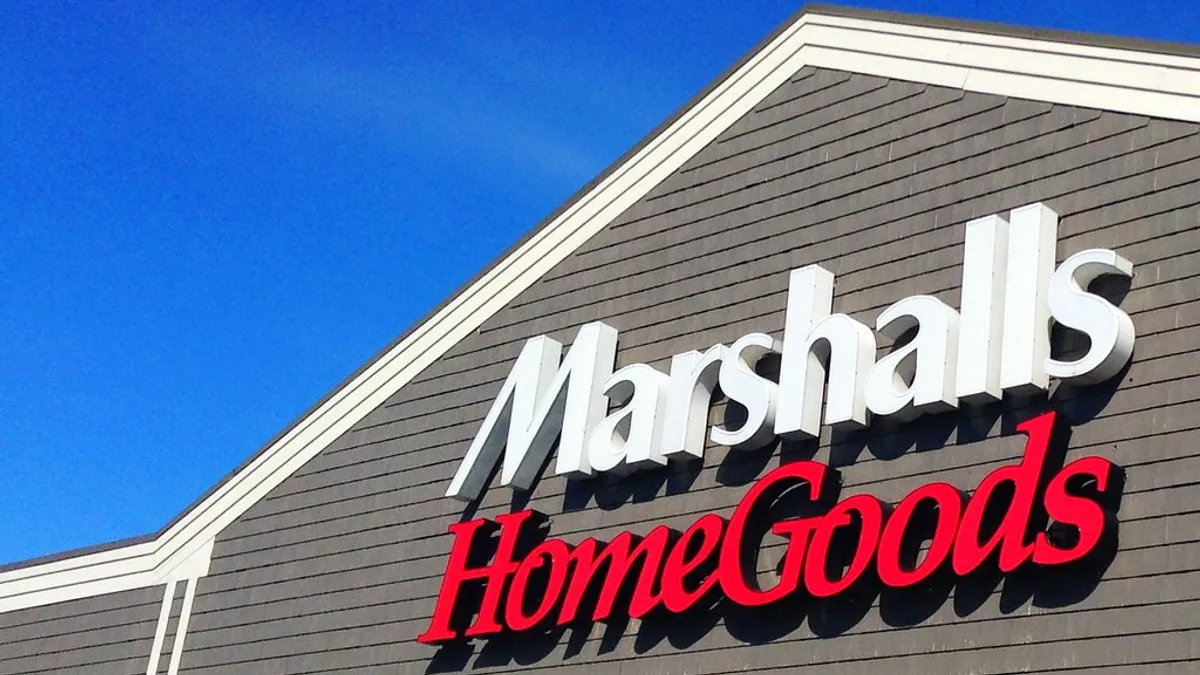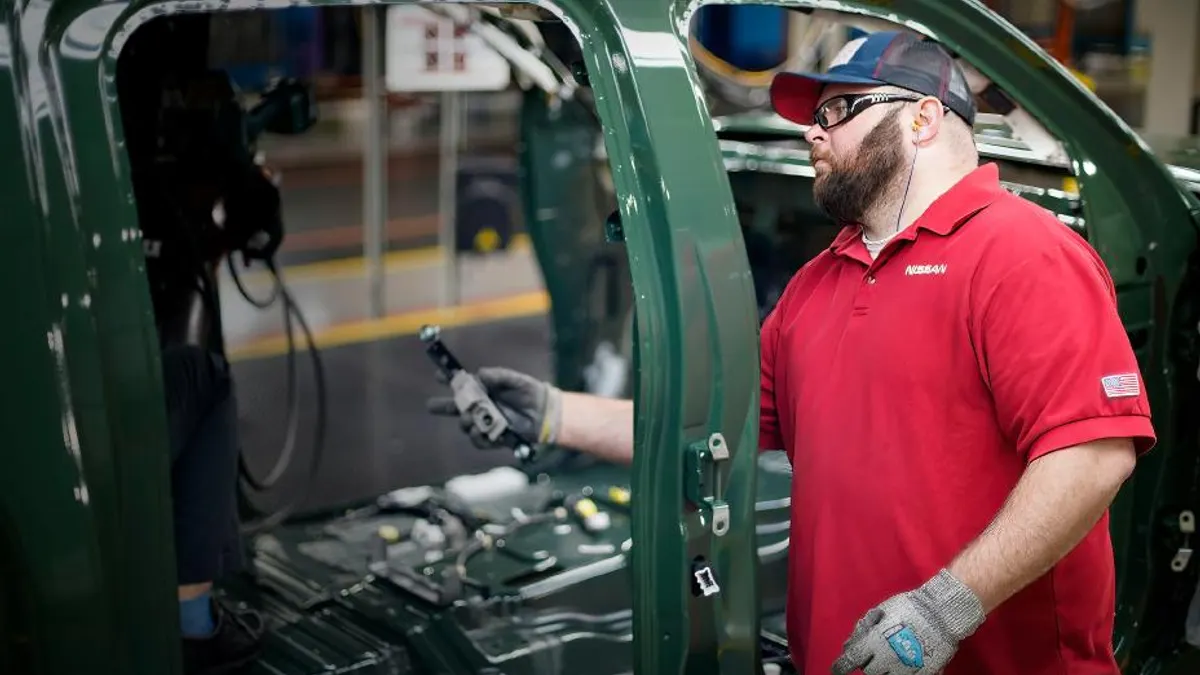Amazon. Warby Parker. Bonobos. Casper. All of these stores are known as online retailers, yet they’re opening brick and mortar locations or heading to another store’s retail aisle. With cries about the death of physical stores, it seems odd for online retailers to set up shop, paying per square foot so customers can buy products they can easily get online. But perhaps it was meant to be.
"Retail is far from dead, but pure-play retail brick and mortar, is," said Reid Greenberg, executive vice president of digital and eCommerce at Kantar Consulting. "We’re starting to see more of the pendulum swing back to (brick-and-mortar) retailing, but it will look different than in the past."
And part of that difference involves the supply chain. Around 80-85% of sales are from physical stores, and that won’t change, said Greg Zakowicz, a senior commerce marketing analyst at Oracle + Bronto.
Sometimes referred to as "clicks to bricks," these retailers are building a new kind of customer experience, building physical stores to provide more personalized and digitally connected services to their customers, to merge the online with hands-on experiences.
For brands whose sales all go through their warehouse, this represents a fundamental shift in how they do business.
The other reason to open clicks-to-bricks stores is that eCommerce retailers are driving incremental sales by allowing multi-channel shopping. Those shopping in more than one channel spend about a third more than they would on that brand otherwise.
"There’s a huge upside: repeat purchases, increased average order value and interacting with the brand in person," Greenberg said. It’s not the right move for every retailer, as it involves large capital expenses, but it works for some.
E-tailers change up store models
Clicks-to-bricks retailers have several advantages. They’re focused on the online customer experience, like how to browse efficiently and how to check out quickly and conveniently.
"They can take the lessons learned from traditional stores, to provide a better experience. They know what type of products the customers want and purchase," said Zakowicz. Here are models e-tailers are using.
The personalized experience: Personalization and experiences are drawing in customers, something even the coveted millennials want, said Greenberg. The key for this market is knowing that they are seeking out empathy, personalization and a retailer who knows who they are.
- ModCloth, a clothing e-tailer, offers appointments to its Austin store, to guarantee a fitting room and a one-hour stylist consultation. They call their stores "fit shops," and sell some items available to take home and some that will be shipped.
The showroom: The showroom model stocks samples so customers can interact with the products, but they’ll be shipped from the warehouse after purchase. That eliminates the need for storage and extensive inventory tracking, so they can decrease square footage.
"The idea is to take a minimalist, cleaner approach. The experience is more of a showroom than inventory with endless amounts of stuff," said Greenberg. They may limit what they’re selling based on what’s doing well online, with cost savings from less frequent shipments to the store, and inventory stocking.
- Warby Parker, a prescription eyeglass and sunglass store, currently operates 64 stores, with plans to have 100 stores by the end of 2018. Consumers want to try on glasses before they buy and they’re used to waiting for the final product to be customized.
A potential downside to the showroom model is that while people like to touch products before buying them, almost half of shoppers want to take items home with them. Clicks-to-bricks retailers get leeway on this from their customers.
"The consumer is used to buying online and getting it shipped, getting it a few days later," Zakowicz said. While they may expect this more from traditional stores, those with brand affinity may not care as much about that instant gratification.
"If every store moves to the showrooming model versus buying and taking it with you, with you, there will be a problem," Zakowicz said.
And of course, many traditional retailers are now offering free shipping for items not found in store.
Incorporating technology: The new store retailers are using technology to personalize the customer experience as well as track merchandise for analytics. With some brands, customers can log in and be identified when they enter. Sales associates can see past purchases to make recommendations, or a phone app can do that for the customer.
"These retailers are experts at understanding that technology is driving the new in-store experience," Greenberg said.
Brands are also using customer data to locate their physical store in geographical areas where they know they have customers. That’s not necessarily an expensive shopping area with a ton of foot traffic. Fabletics, which started as an online activewear retailer, added two dozen stores in recent years, and plans to add more.
They track the items customers try on using an electronic screen outside each dressing room, and can add the items to the customer’s online cart even if they don’t want to immediately purchase it. They can do later from their device.
- Amazon’s stores let customers pay with their Amazon app or email address, with orders added to their online Amazon account. Prime members pay the internet Prime price for their purchases.
- Charlotte Tilbury, a UK make-up brand, did not start as an eCommerce retailer, but branched out from department stores into its own footprint. It uses augmented reality mirrors to let customers try 10 different make-up styles, and of course they can easily purchase the featured products electronically and have them shipped to their home.
Placing brands in popular stores: Another option to hanging up a shingle is putting a brand’s items in another company’s retail store.
- The Honest Company is now selling some of their products at Target and Costco.
- Casper mattresses are being sold at Target, with Target taking a financial stake in the mattress company.
How clicks to bricks affects the supply chain
For most online retailers who are only opening a few stores, logistics like trucking and warehouse location or distribution won’t change much.
"What will change the retailers is the system controlling inventory counts," Zakowicz said. They’ll have to make sure the in-store system is talking to the warehouse.
Most transactions will still be online, whether the shopper is interacting with technology to create that order, or the store is ordering on behalf of the customer. Companies with top notch data analytics can use the information from the physical store to inform their online purchases, and vice versa.
What traditional retailers can learn
What can traditional retailers learn from what eCommerce companies are doing in brick and mortar?
"That’s the million dollar question," said Zakowicz. "It’s customer experience."
That means simplifying their in-store process. If they order something online and pick it up in the store, make sure there’s a dedicated person making it a smooth experience. If possible, check customers out on handheld tablets to speed it up.
Stores that have apps can make it easy for customers to buy something on the app while shopping in the physical store, and have it shipped.
Retail is far from dead, but pure-play retail brick and mortar is.

Greg Zakowicz
Sr. Commerce Marketing Analyst at Oracle + Bronto
Retailers that don’t pivot to incorporate the new world of interconnected commerce won’t remain competitive. Traditional retailers like the Home Depot, Kroger, Walmart, Walgreens and CVS are learning that "the entrance to the store is in the phone," said Greenberg. They need to connect with shoppers that way. If consumers opt in, traditional retailers can use sensors to track those apps in the store, sending them coupons or purchase suggestions.
The Home Depot is leveraging their app, using innovation like chatbot technologies and augmented reality to drive sales and mobile use. Using the app can help customers find the right product using a photo matching system, even if they don’t know what the product is, and see what products look like in their room using augmented reality on the app.
Not all stores need to change. Retailers like TJ Maxx and Home Goods are doing well without this. Their experience is about getting great brands at great prices.
Brands born with a digital mindset, however, can scale up the company more quickly, "and follow that up with a strong backstroke in brick and mortar, but not in a traditional way," Greenberg said.





















